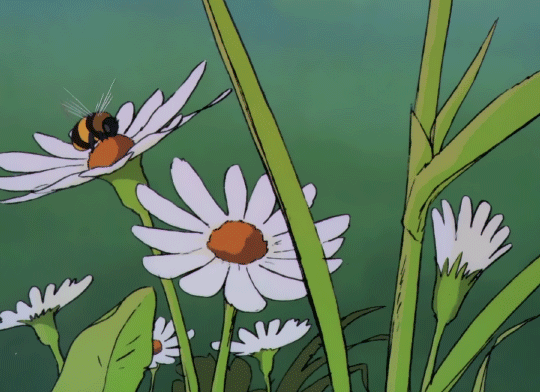Inciter Art
a writing, co-learning, and resource sharing space for an arts ecosystem with big ideas and bigger questions.
-
- Categories
- Social
- Subscribe

Big Ideas | How We Work | Leadership | Change Management | People Operations
By
Tim Cynova
May 16th, 2017
Prefer this post in an audio format? Here you go. Change comes in an assortment of flavors, each impacting people in different ways. For the most part, any change initiative is less about the thing you’re changing and more about people’s reaction to the change. Don’t believe me? See Adam’s Equity Theory, Vroom’s Expectancy Theory, or Herzberg’s Two-Factor Theory, for starters. The world in which we live today is constantly changing, and the rate of change feels more like it’s increasing exponentially rather than simply incrementally anymore. For organizations trying to remain relevant and effective in this environment, they’re either moving forward or falling behind.

Big Ideas | Artificial Intelligence | Creativity | Soapbox
By
Adam Huttler
May 15th, 2017
Time for another exciting update on adventures in impact investing during my not-a-sabbatical! (If that sentence doesn’t ring any bells, you might want to read the two linked posts to get caught up. Not a requirement, though!)

If you're enjoying browsing, get the latest articles delivered straight to your mailbox 💌

Big Ideas | How We Work | People Operations | Human Resources
By
Tim Cynova
May 9th, 2017
We hear a lot these days about the importance of having great organizational culture. “Culture eats strategy for breakfast” is the infamous Peter Drucker refrain. But what exactly do we mean by “great company culture,” let alone company culture that changes the world and enables people to leave their dent on the universe?

Tips and Tools | Arts Business | Exponential Creativity | Impact Investing | Startup | Uncategorized
By
Lisa Niedermeyer
May 9th, 2017
photo credit: Marcel Münch via Flickr As scout for the Exponential Creativity Fund at Fractured Atlas, I’m in the unique position of finding arts entrepreneurs to pitch to our impact investment fund, helping them prepare, and participating in the pitch sessions.

Tips and Tools | Nonprofit | Fundraising
By
Courtney Harge
May 4th, 2017
Party On, Artists! Warmer weather brings many social events: why not use some of those events to support your fundraising! Before you do, however, Fractured Atlas would like to remind you of some of the best practices for planning your fundraising events. We’ve talked about planning, marketing, and running a fundraising event before, so now felt like a great time to revisit some of the best tips and tools for your reference.

Big Ideas | How We Work | Leadership | People Operations | Human Resources
By
Tim Cynova
May 2nd, 2017
by Tim Cynova, Chief Operating Officer at Fractured Atlas I used to work with someone who would always ask “Which would you rather” questions. Which would you rather: Wear a bathing suit in Antarctica, or a snow suit in the desert? Which would you rather as a musician: Be a one-hit wonder with a song that defines summer for a generation, or a member of a band with modest success for 10 years?

Big Ideas | Arts | Soapbox | Trump | Uncategorized
By
Joe Voss
May 2nd, 2017
An interview with the Director of Strategic Partnerships at Creative Many Michigan Joe Voss, Director of Strategic Partnerships at Creative Many Michigan This is an interview in a series featuring a broad range of reactions to President Trump’s first 100 days in Office, conducted by Lauren Ruffin, Vice President, External Relations at Fractured Atlas. In this interview we hear from Joe Voss, Director of Strategic Partnerships at Creative Many — Michigan’s creative sector advocacy organization.

By
Tiffany Wilhelm
May 1st, 2017
An interview with Tiffany Wilhelm, Deputy Director of the Greater Pittsburgh Arts Council

Big Ideas | How We Work | Communication | People Operations | Human Resources
By
Tim Cynova
April 26th, 2017
Communicating over space and time [Editor's Note 3/17/10: While the information below is still useful — particularly how channels are used — we also published this related and updated piece.] “Communication is key” is one of those business-isms, like “Culture eats strategy for breakfast,” that seem to appear in most of the articles I read about organizational culture. It’s not misplaced. Open, honest, and respectful communication is a key ingredient in high performing teams and organizations.

Arts | Arts Business | Artsentreawards | Tech
By
Jason Tseng
April 12th, 2017
Interview with Founder & CEO, Shaheen Lavie-Rouse Earlier this year, Hire Notes — a booking platform for musicians that helps them manage their paid gigs , seamlessly get paid on time, and find new bookings— was selected as an honoree for the 2017 Arts Entrepreneurship Awards. We sat down with Hire Notes, CEO and Founder, to talk about how a music conservatory student founds their own technology start up.